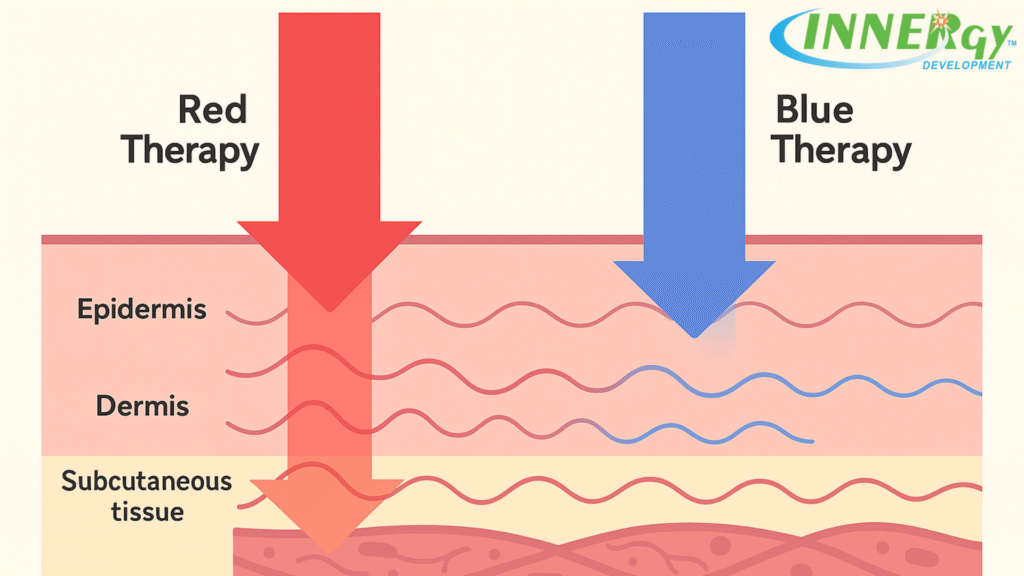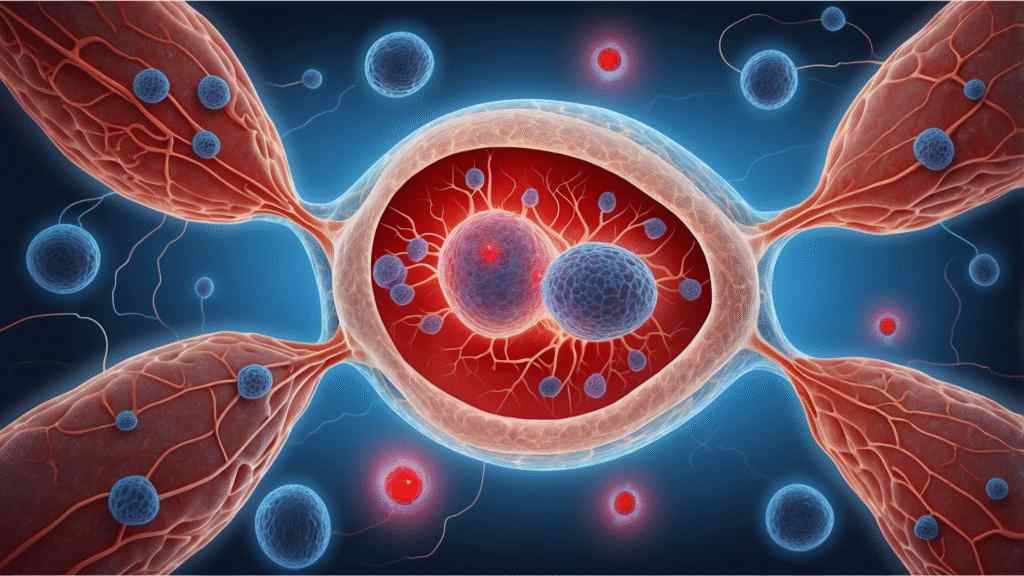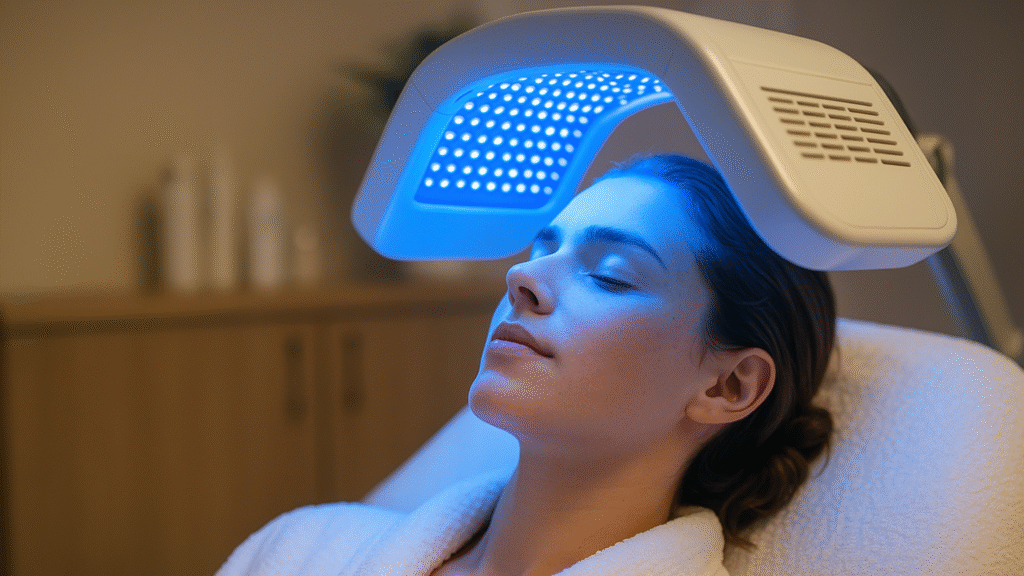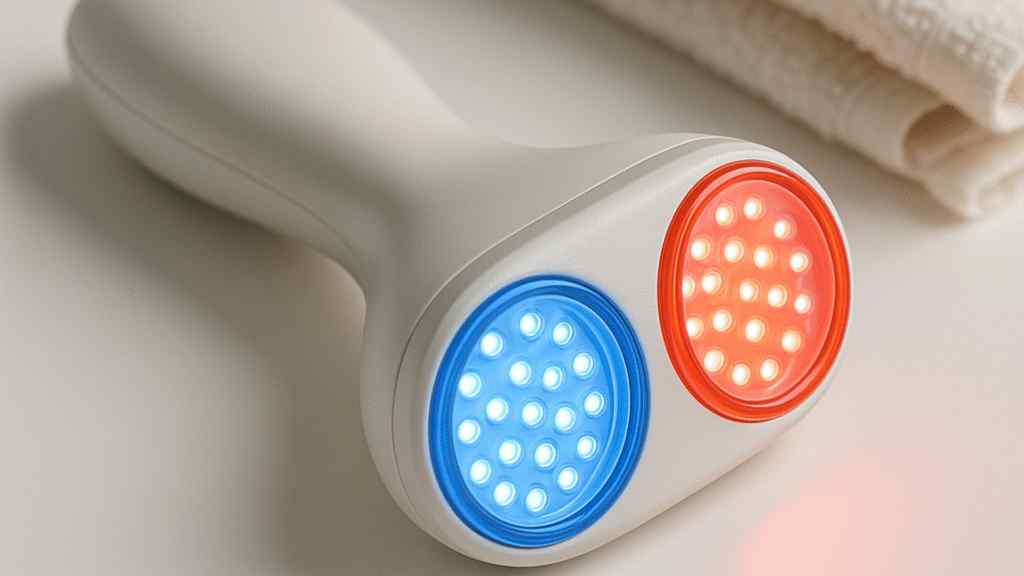Red light vs blue light therapy has become a popular discussion in wellness and skincare. While both red and blue light offer unique benefits, their effects on the body are vastly different. Red and near infrared light go deeper, offering more comprehensive results across wellness, skin, and cellular recovery.

What Is Light Therapy and How Does It Work?
Light therapy is a non-invasive wellness technique that uses specific wavelengths of light to stimulate natural healing and rejuvenation within the body. It has gained popularity for its role in supporting skin care, mood regulation, and muscle recovery. Red light therapy and blue light therapy are the most widely used forms, each with unique benefits.
Different wavelengths of light interact with the body in distinct ways. Red light penetrates deeper into tissues, influencing muscle, joint, and skin health, while blue light primarily targets the skin’s surface, especially for issues like acne. These variations are due to how each wavelength travels across the electromagnetic spectrum and interacts with various cellular processes.
A light therapy device can range from full-body beds to handheld panels and masks. These tools are often designed for targeted use on specific areas and are available for both clinical and home environments.
The Science Behind Light Therapies
Light therapies influence the body at a cellular level by targeting mitochondria, the energy-producing structures inside cells. When exposed to light, particularly red and near infrared wavelengths, mitochondria produce more ATP, the molecule responsible for fueling cellular energy.
This increase in ATP leads to beneficial cellular responses, such as faster healing, improved function, and stronger regeneration. These processes are part of what makes light therapy an effective tool for wellness.

Red Light Therapy Explained: Skin, Muscle, and Cellular Energy
Red light therapy uses wavelengths typically ranging from 600 to 850 nanometers. These red light wavelengths reach into the deeper layers of the skin and muscle, making them ideal for full-body light therapy applications. The energy absorbed by cells helps promote natural healing and regeneration across various systems in the body.
For skin health, red light therapy encourages collagen production, which supports elasticity, firmness, and a smoother skin texture. It can help reduce the appearance of fine lines and promote overall skin rejuvenation, making it popular in beauty and dermatology.
The therapy is also known to reduce inflammation and accelerate wound healing. This is particularly beneficial for those recovering from skin damage or dealing with chronic skin conditions, as the light promotes healing through increased cellular activity and blood flow.
In terms of pain relief and muscle recovery, red light helps improve circulation and relax tight or overused muscles. Athletes often use it to recover faster after intense training or injury, while others use it to manage chronic discomfort.
Some users also report noticeable hair growth over time. By stimulating blood flow and cellular regeneration in the scalp, red light therapy can support healthier hair follicles and long-term scalp wellness.
The Benefits of Red Light Therapy in Daily Use
The benefits of red light therapy extend into everyday wellness routines. Many users incorporate light therapies to support a consistent skincare routine that targets aging concerns, promotes radiant skin, and helps maintain a healthier complexion over time. Its convenience makes it easy to use regularly at home or in professional settings.
With continued use, red light therapy offers anti aging effects such as smoother skin and fewer fine lines, while also supporting post-workout recovery. Its non-invasive nature and broad range of benefits make it a versatile wellness tool.
What is Blue Light Therapy Used For?
Blue light therapy is a common option for treating surface-level skin concerns. It uses blue light wavelengths, typically between 415 and 495 nanometers, that stay close to the skin’s surface. While blue light therapies are widely available, their benefits are more limited compared to other light-based approaches.
One of the primary uses of blue light therapy is acne treatment. The light targets acne-causing bacteria that live on the skin’s surface, helping reduce breakouts and prevent future breakouts. It is often recommended for mild to moderate acne cases.
Blue light also affects circadian rhythm and melatonin production. Some therapies use controlled exposure to support mood balance and sleep-wake cycles, especially for individuals dealing with Seasonal Affective Disorder (SAD).
Despite these benefits, blue light works only on the top layers of the skin and is not ideal for deeper skin issues. When comparing light vs other modalities, blue light is best suited for targeted, surface-level treatments.
Blue Light Therapies and Acne Reduction

Blue light LED therapy is best known for its role in acne treatment. It targets acne causing bacteria on the skin’s surface, disrupting their ability to grow and spread. By reducing bacteria, it helps calm inflammation and decrease the frequency of breakouts.
This method is ideal for those who want to treat acne without using harsh chemicals or prescription medications. Blue light therapies are often used in dermatology clinics and can also be found in at-home devices designed for daily use.
Red Light vs Blue Light Therapy: Key Differences
When comparing red light vs blue light therapy, the most obvious difference lies in penetration depth. Red light reaches deeper layers of tissue, while blue light remains closer to the surface. This makes red light better for cellular support and muscle recovery, while blue light is suited for acne and surface-level skin concerns.
Red light and blue therapies serve different wavelengths and purposes. Red light supports skin’s appearance by stimulating collagen and circulation, while blue light targets bacteria that contribute to breakouts. The red light and blue approaches are not interchangeable but can be complementary.
Red light offers greater versatility across wellness applications. From pain relief to skin rejuvenation, its deeper penetration and cellular effects support more diverse goals than surface-focused blue light.
Both treatments are considered safe, especially with quality LED systems. However, wearing protective eyewear is recommended during longer sessions, as LED light therapy safe practices should always be followed to protect vision.
Blue and Red Light Wavelengths and Penetration
Red and blue light operate at different depths in the body. Blue light ranges from 415 to 495 nanometers and affects only the uppermost layers of the skin. It works best on the surface, targeting bacteria and minor skin issues.
Red light ranges from 600 to 850 nanometers and can penetrate deeper into tissues. This reach helps stimulate blood vessels, improve skin elasticity, and support healing processes. The ability to reach different depths gives red light an edge in full-body therapeutic applications.
Combining Red and Blue Light For Targeted Therapies

Combining red and blue light has become a popular approach in skincare treatments. Blue light targets acne by neutralizing bacteria on the skin’s surface, while red light helps reduce inflammation, promote healing, and restore skin tone. This dual-action technique provides a balanced and more comprehensive response to common skin conditions.
The two wavelengths offer synergistic benefits by addressing both the root causes and the symptoms of skin concerns. Blue light helps treat acne and prevent breakouts, while red light soothes irritation and repairs tissues that have been affected by inflammation or free radical damage.
Many light therapy devices now feature both wavelengths to support targeted photodynamic therapy. These tools allow for customized sessions that help improve the skin’s overall condition without causing harm. When used consistently, this combined method enhances treatment outcomes and promotes long-term skin health.
When to Use Red and Blue LED Light Therapy
Red and blue LED therapy is often chosen based on individual skin conditions. Blue light is best for oily, acne-prone skin, while red light supports dry or aging skin by improving tone and texture. Using both can address multiple concerns at once.
At home devices like an LED light mask are widely available and often FDA approved. For safe use, carefully follow instructions and choose treatments that match your skin type and goals. Combining wavelengths can be especially effective when used correctly.
Best Practices for LED Therapy at Home
To ensure long term safety, always wear eye protection during sessions and carefully follow instructions provided with your LED device. Choose high-quality tools with proven results and stick to recommended usage schedules for the best outcomes.
Who Should Avoid Certain Light Therapies?
People with certain mental health conditions or those using electronic devices that may interfere with treatments should consult a professional first. Light therapy should be approached with realistic expectations and proper medical guidance.
Final Thoughts on Choosing Red Light Therapy With INNERGY Dev
Red light therapy continues to stand out in the world of light therapy by offering consistent benefits across a wide range of wellness and skincare needs. Compared to surface-level options, it works deeper to support healing, regeneration, and cellular energy.
Its versatility makes it ideal for anyone seeking to improve overall skin health, muscle recovery, or achieve younger looking skin. With consistent use, red light therapy supports the body’s natural systems in a gentle and effective way.
At INNERGY Dev, we offer professional-grade red light solutions designed for maximum results. Whether for personal use or integration into your wellness center, explore how our devices can elevate your approach to health and vitality.

